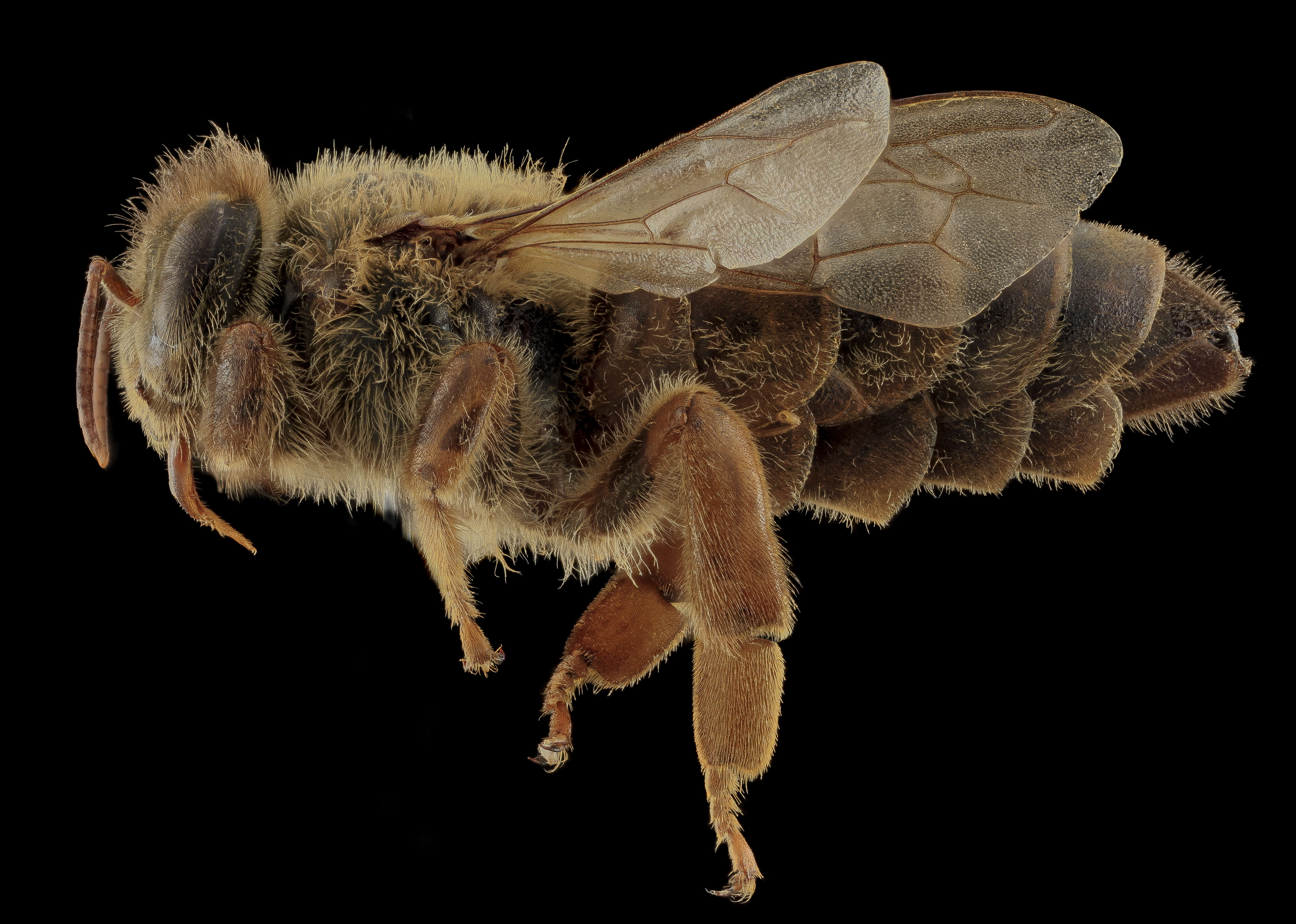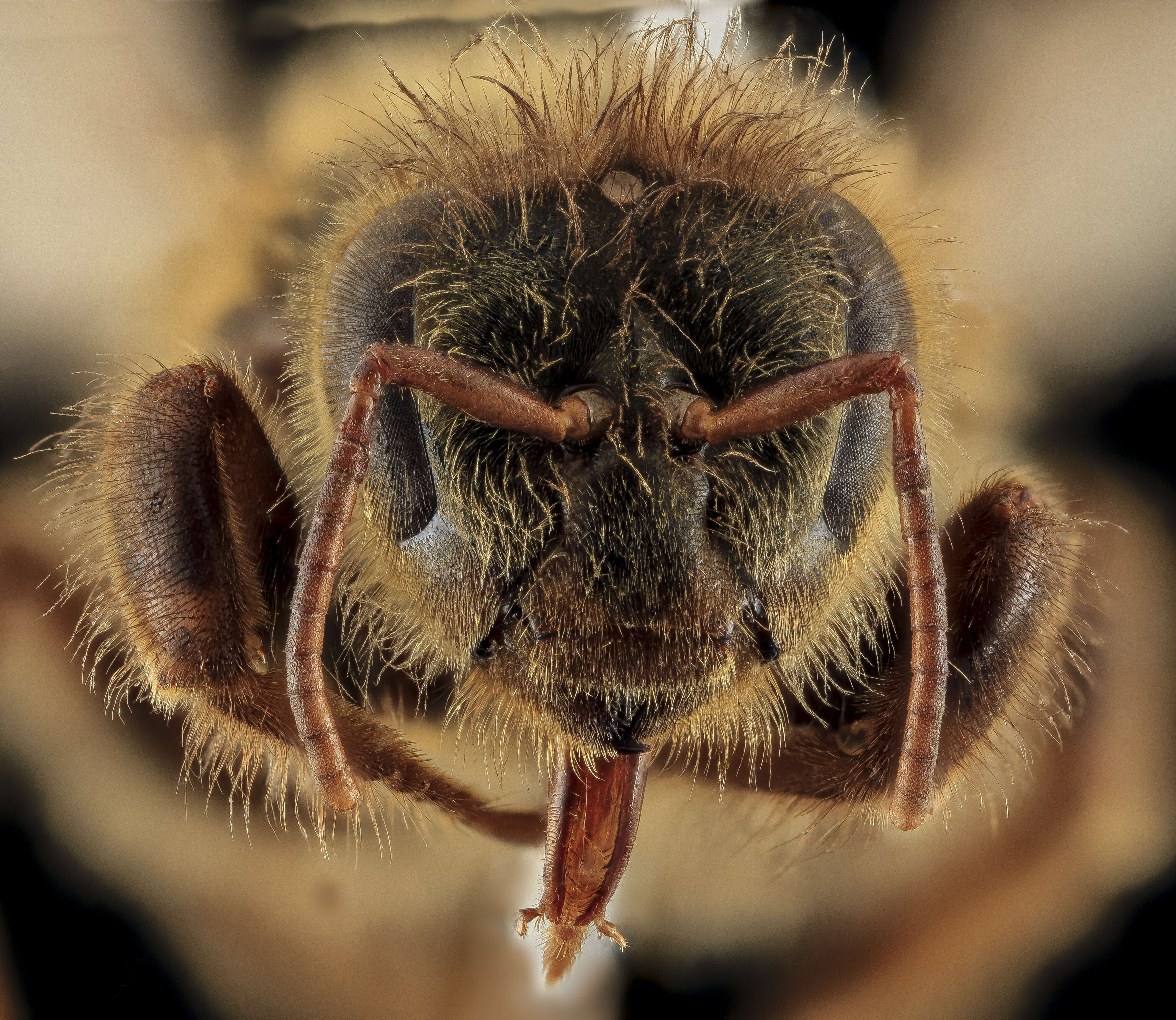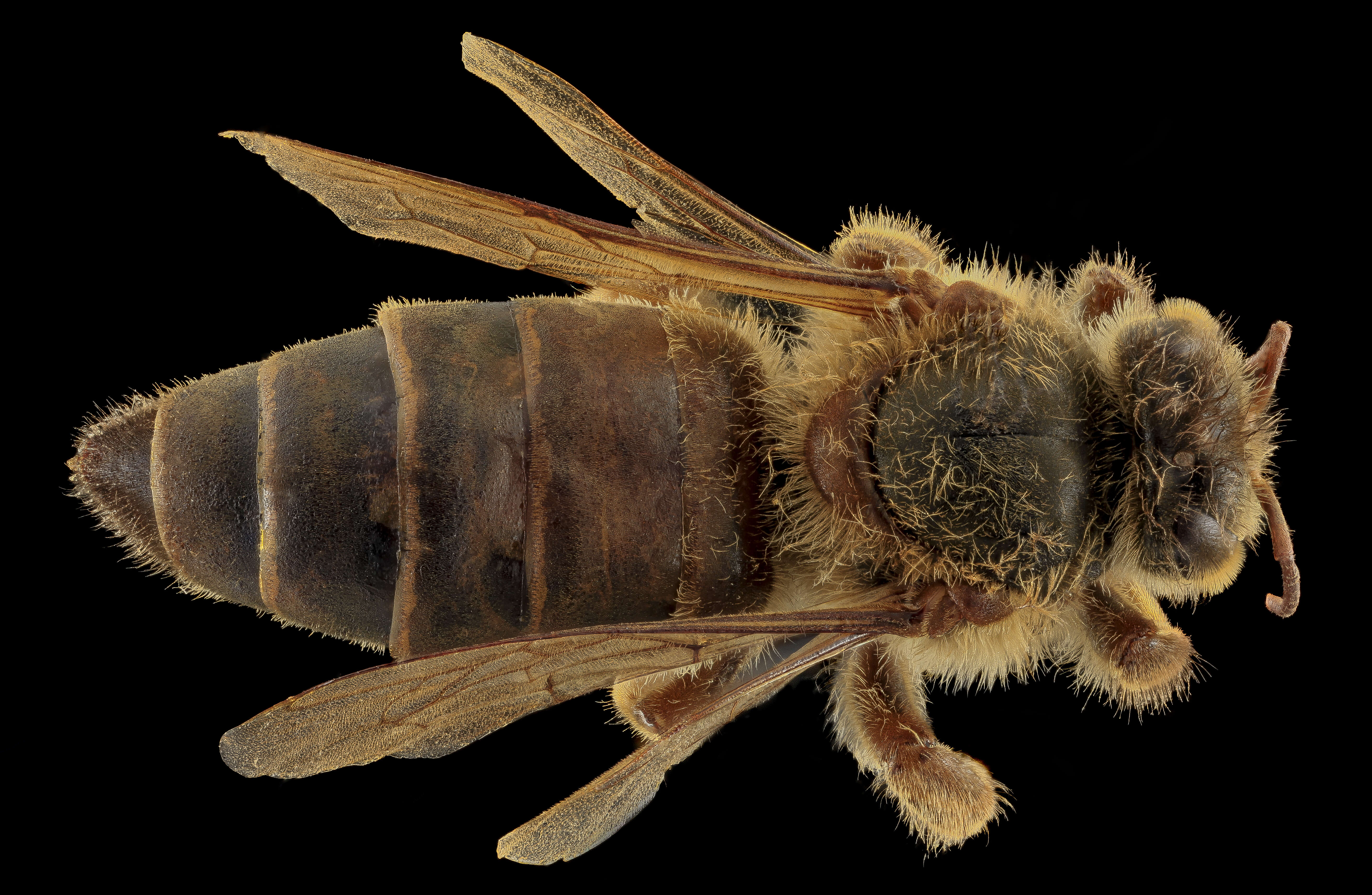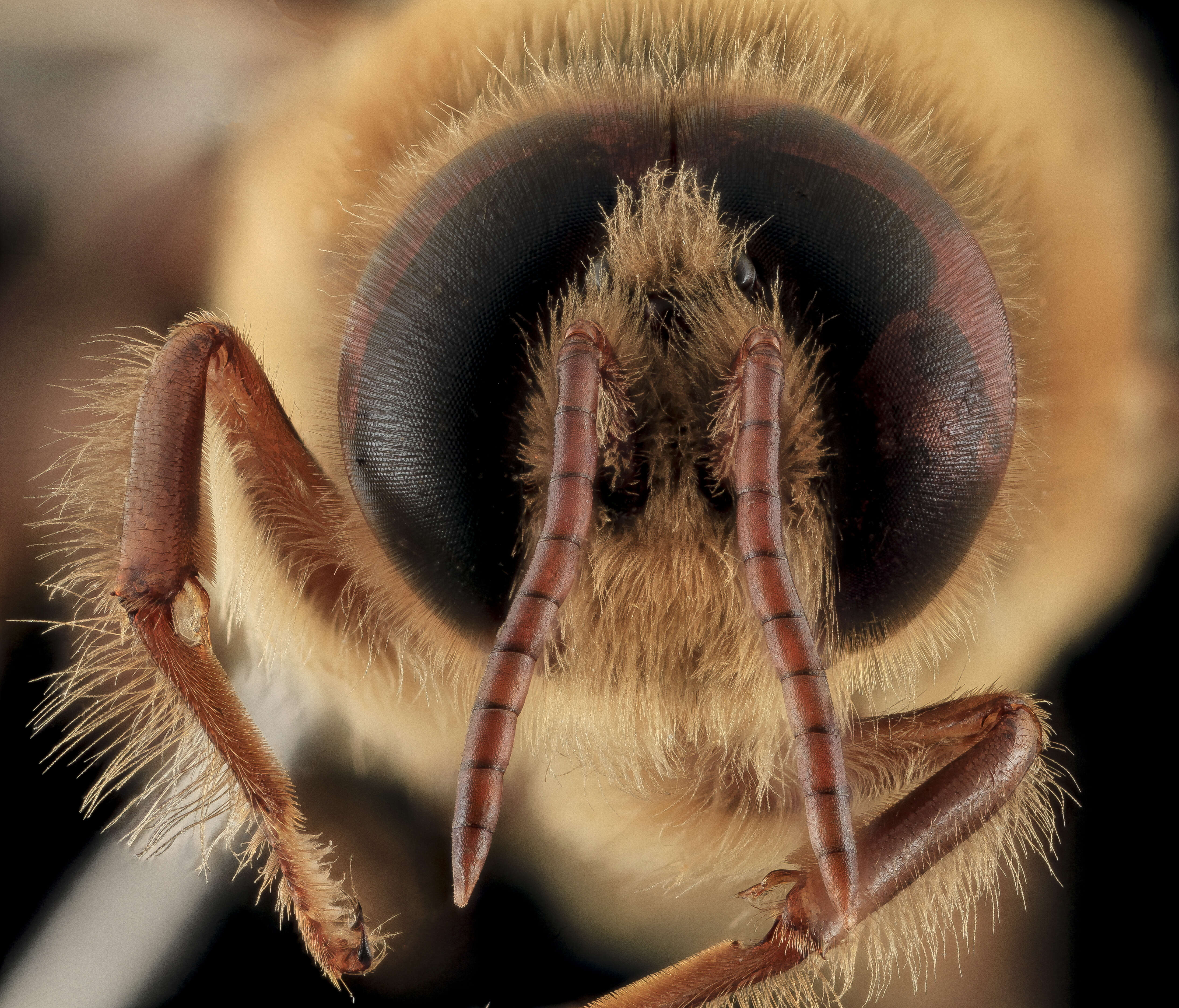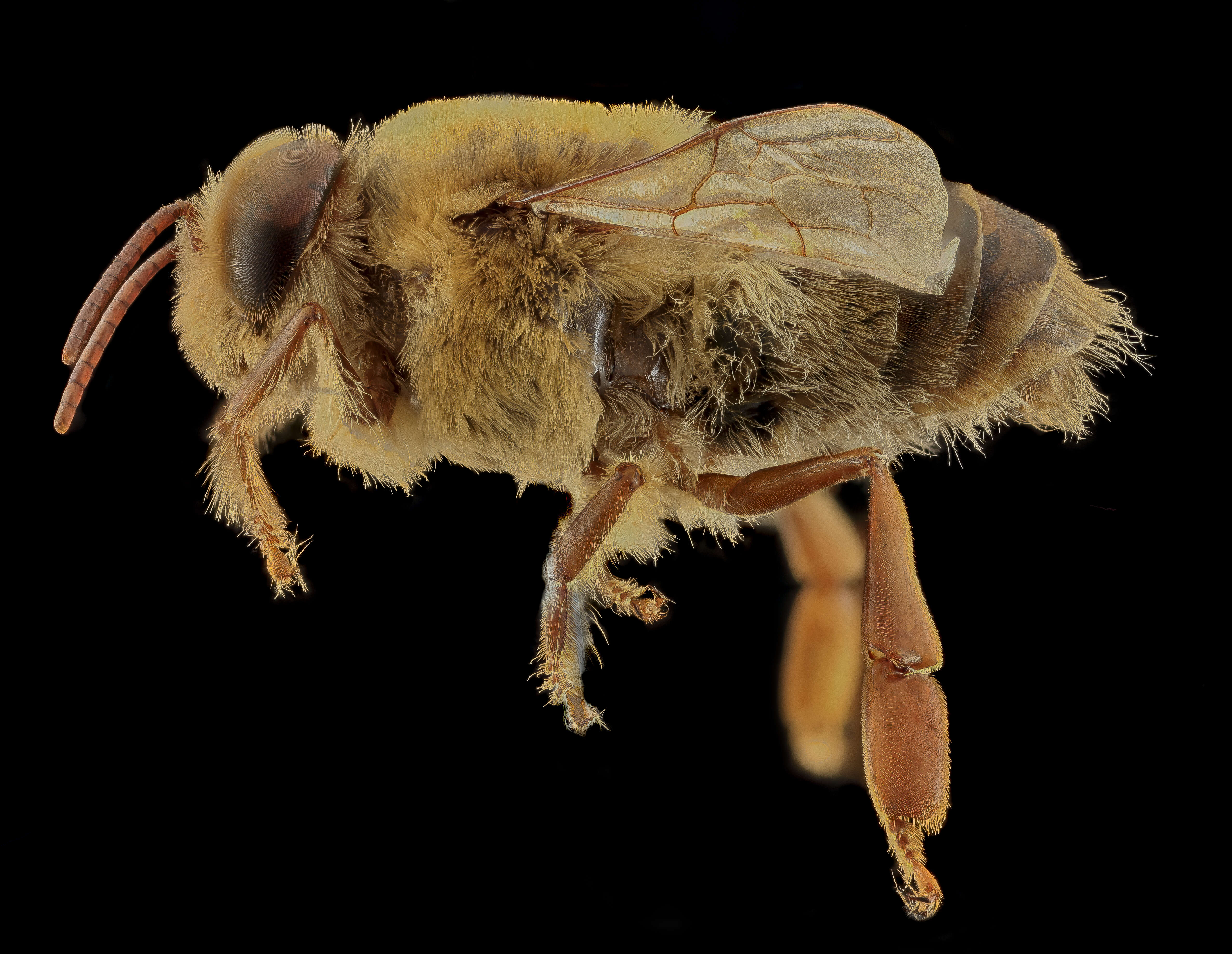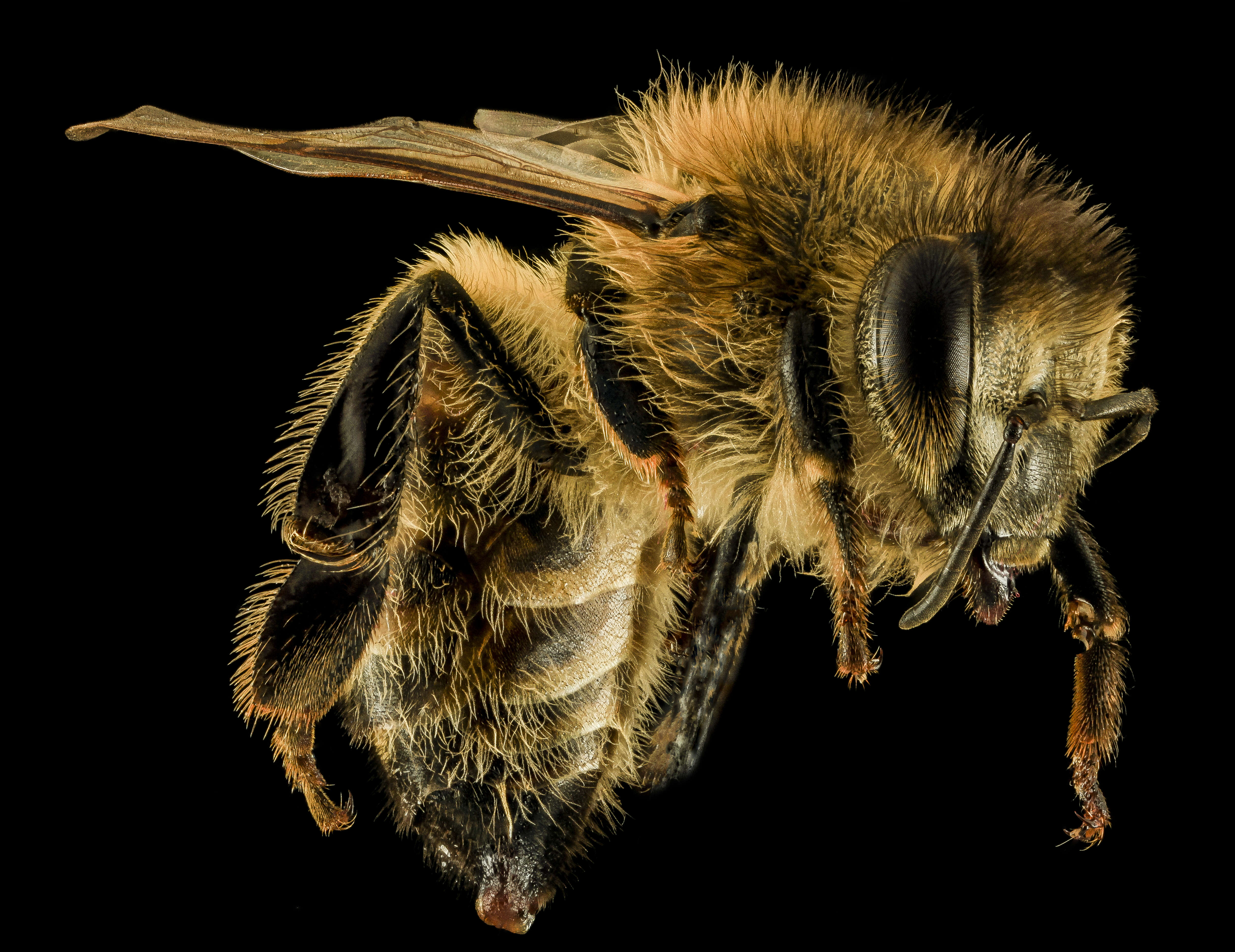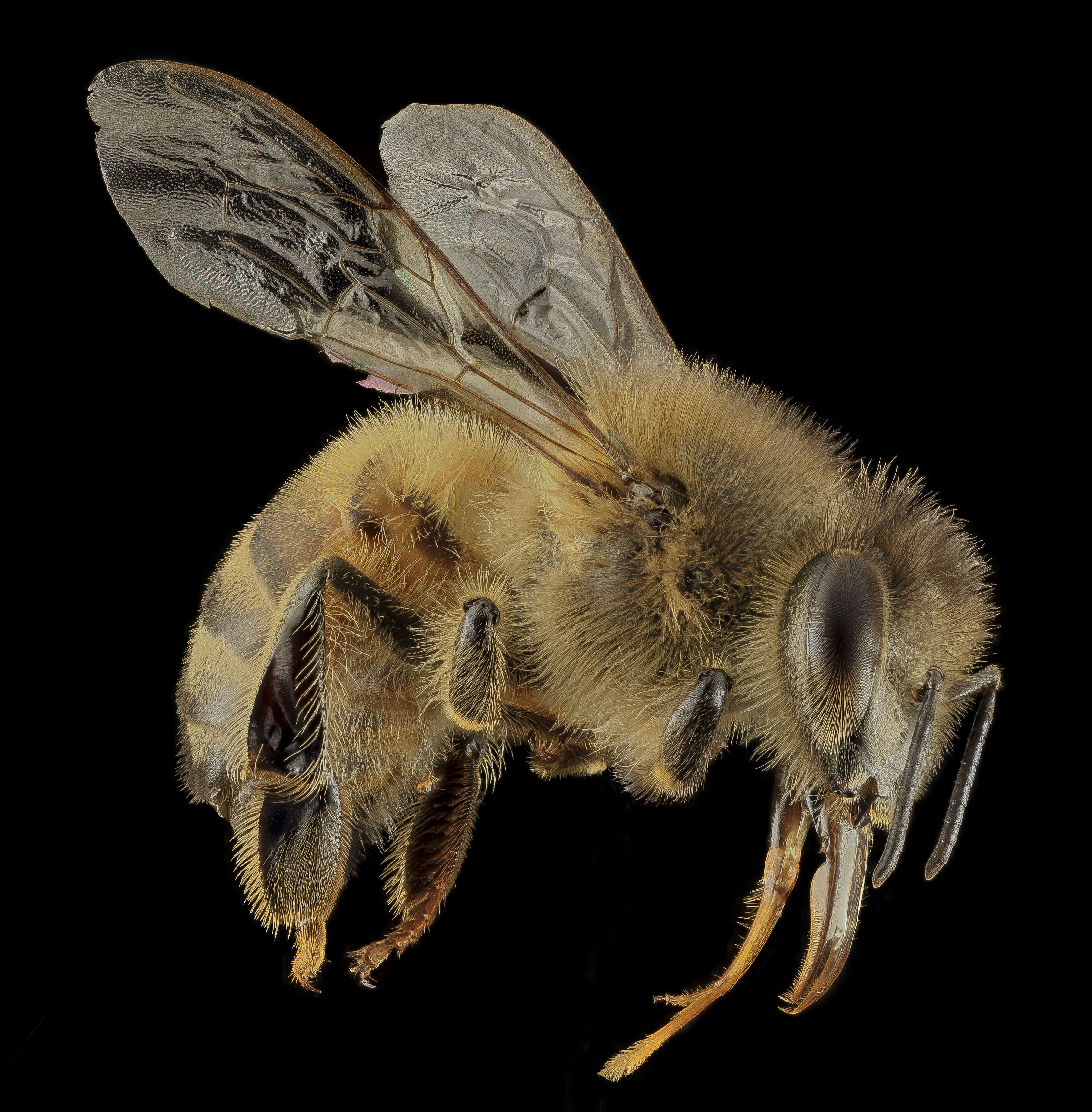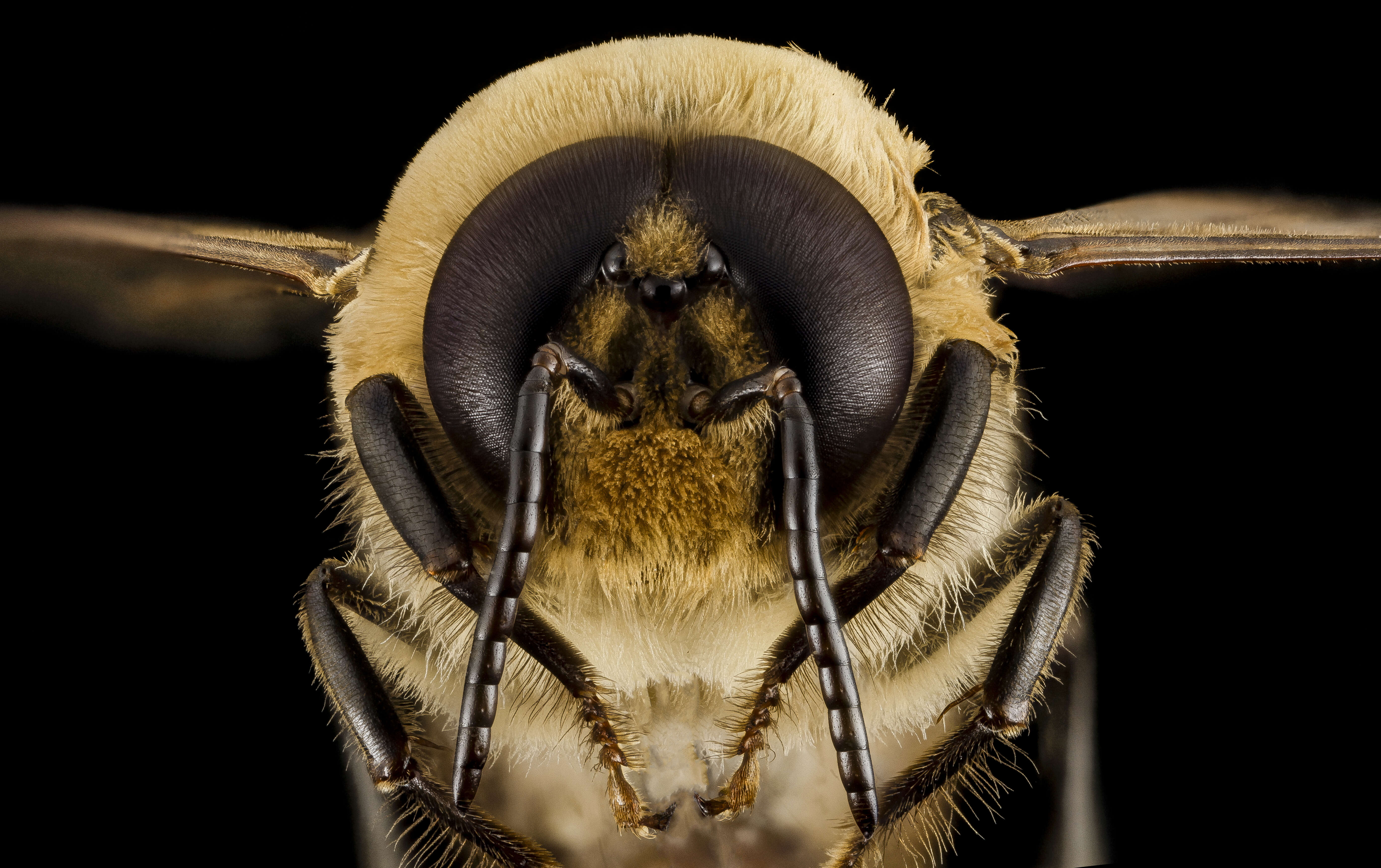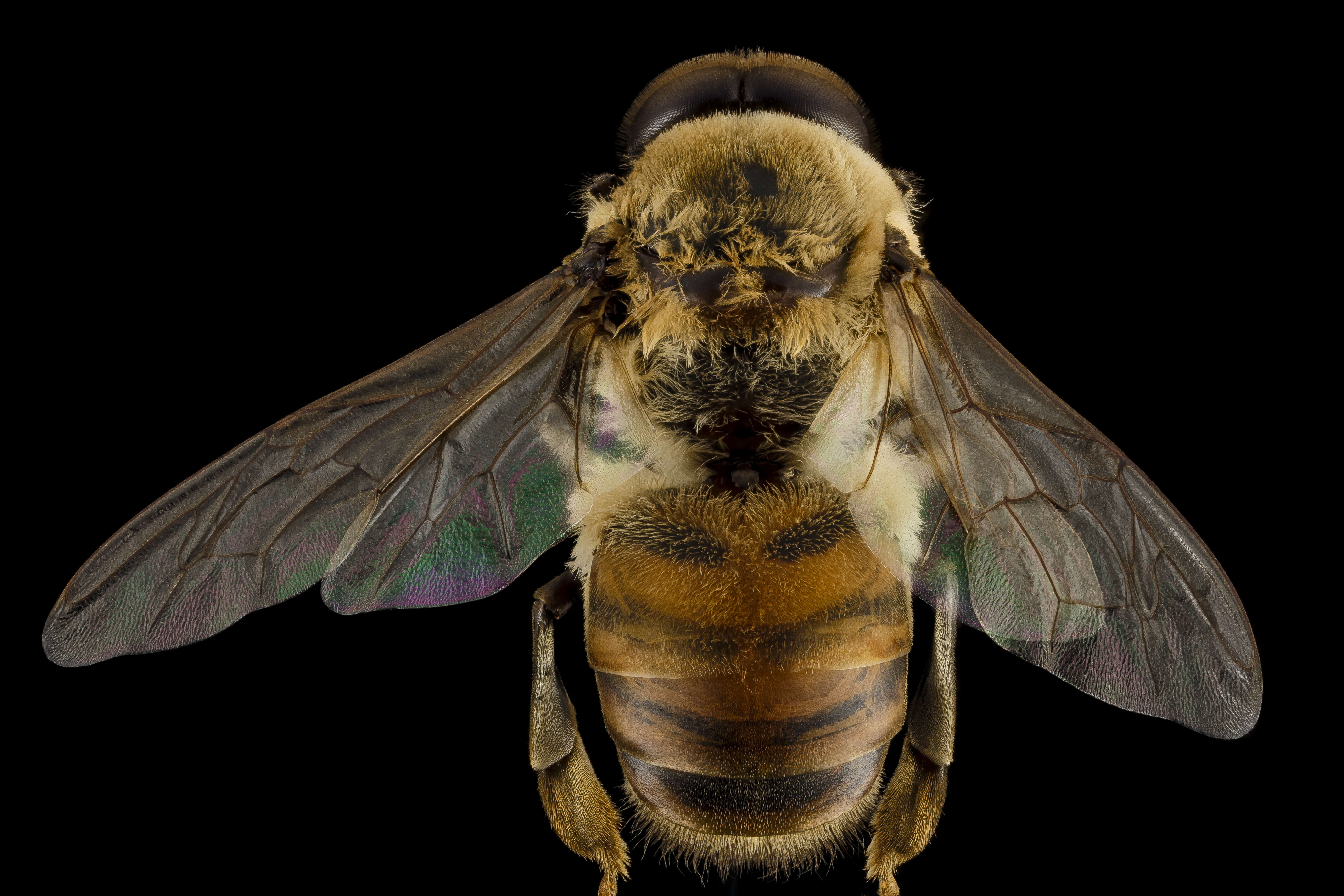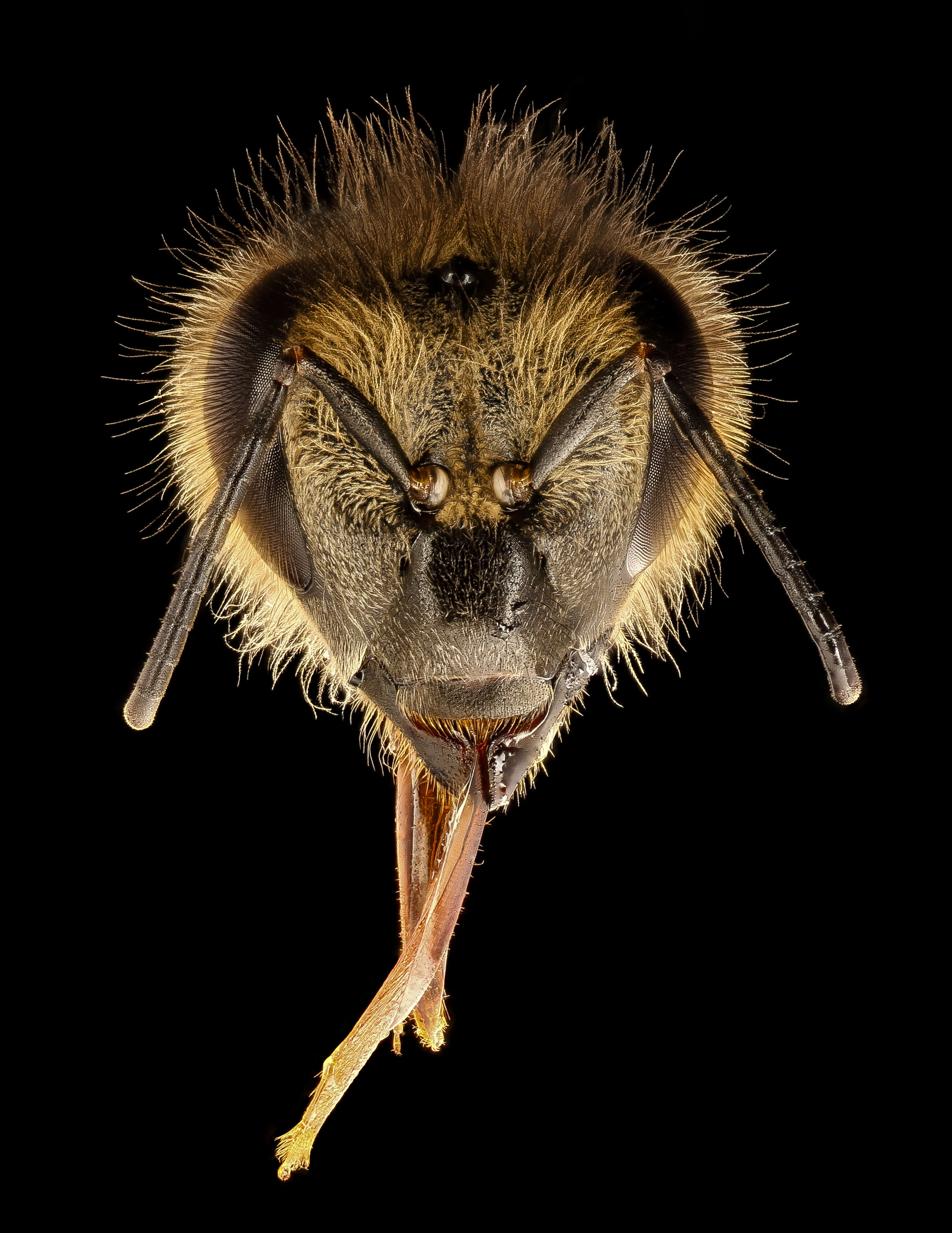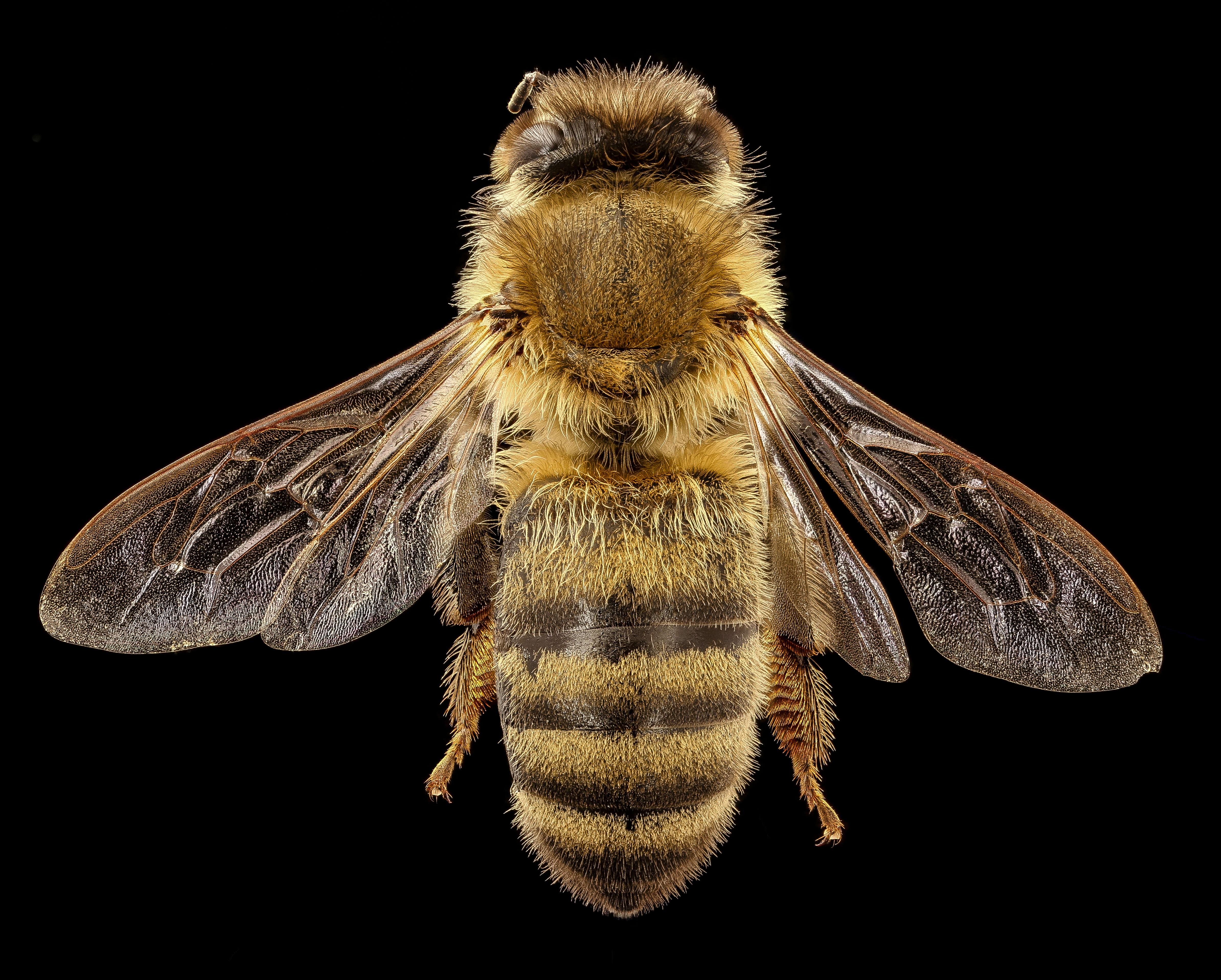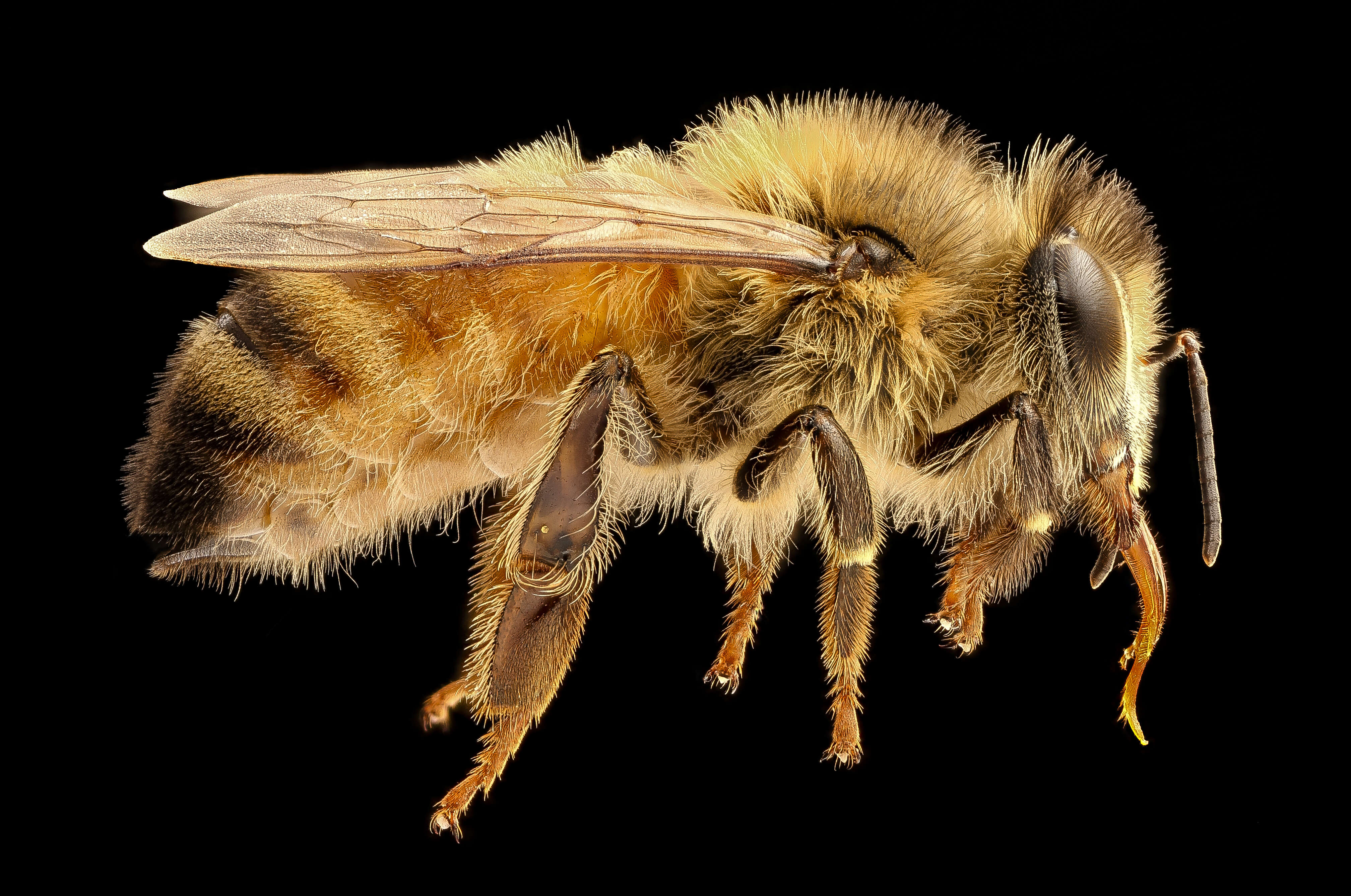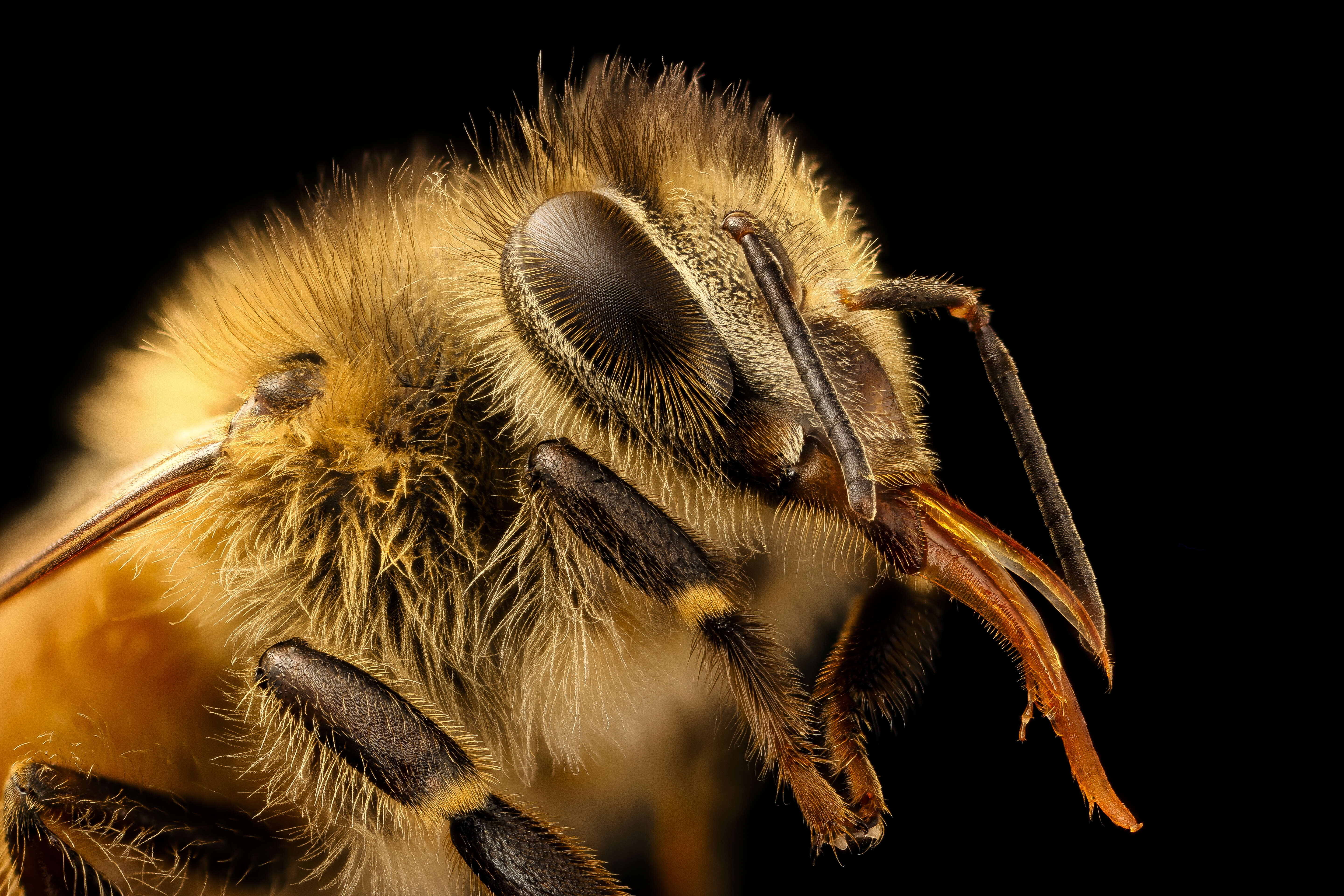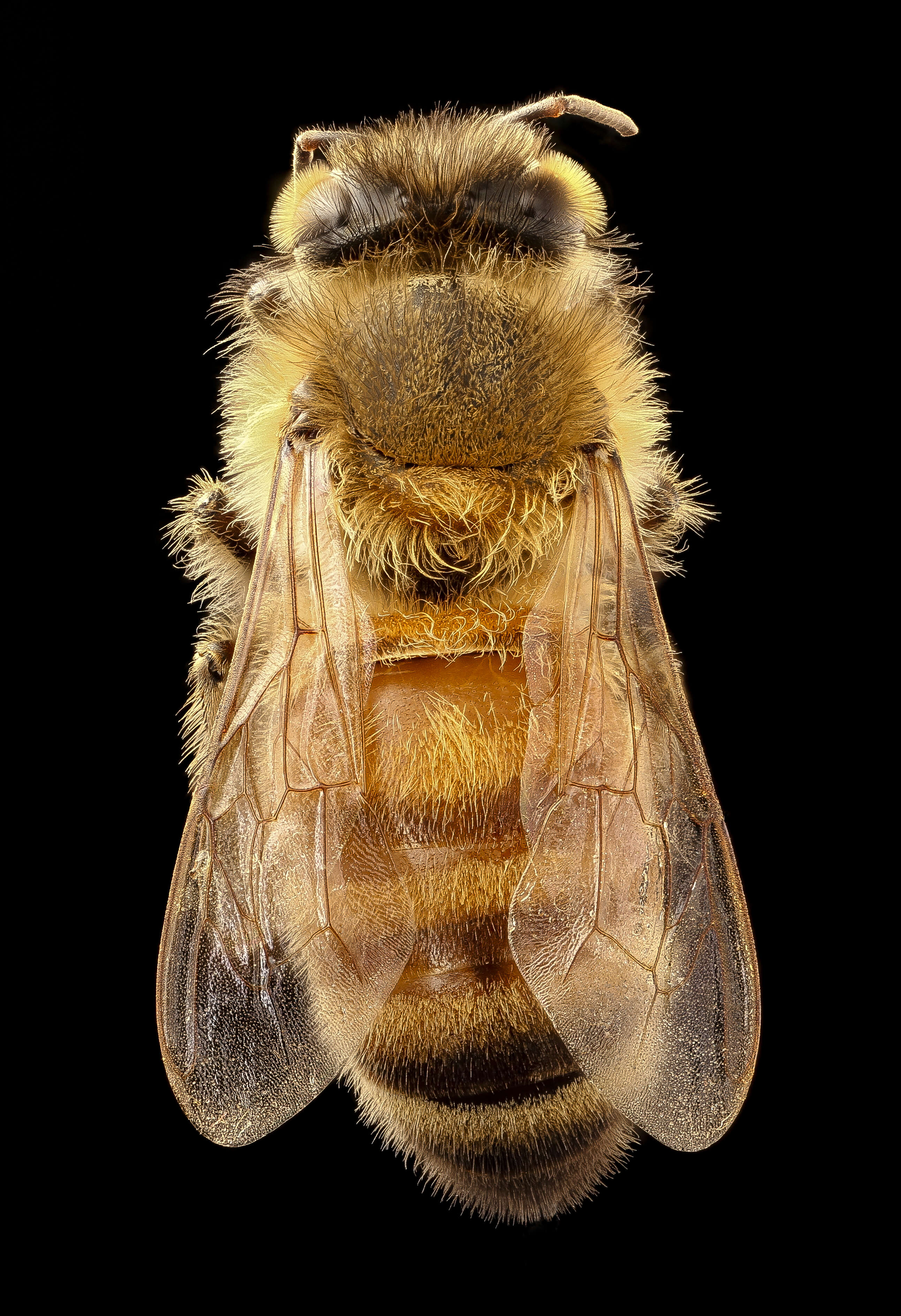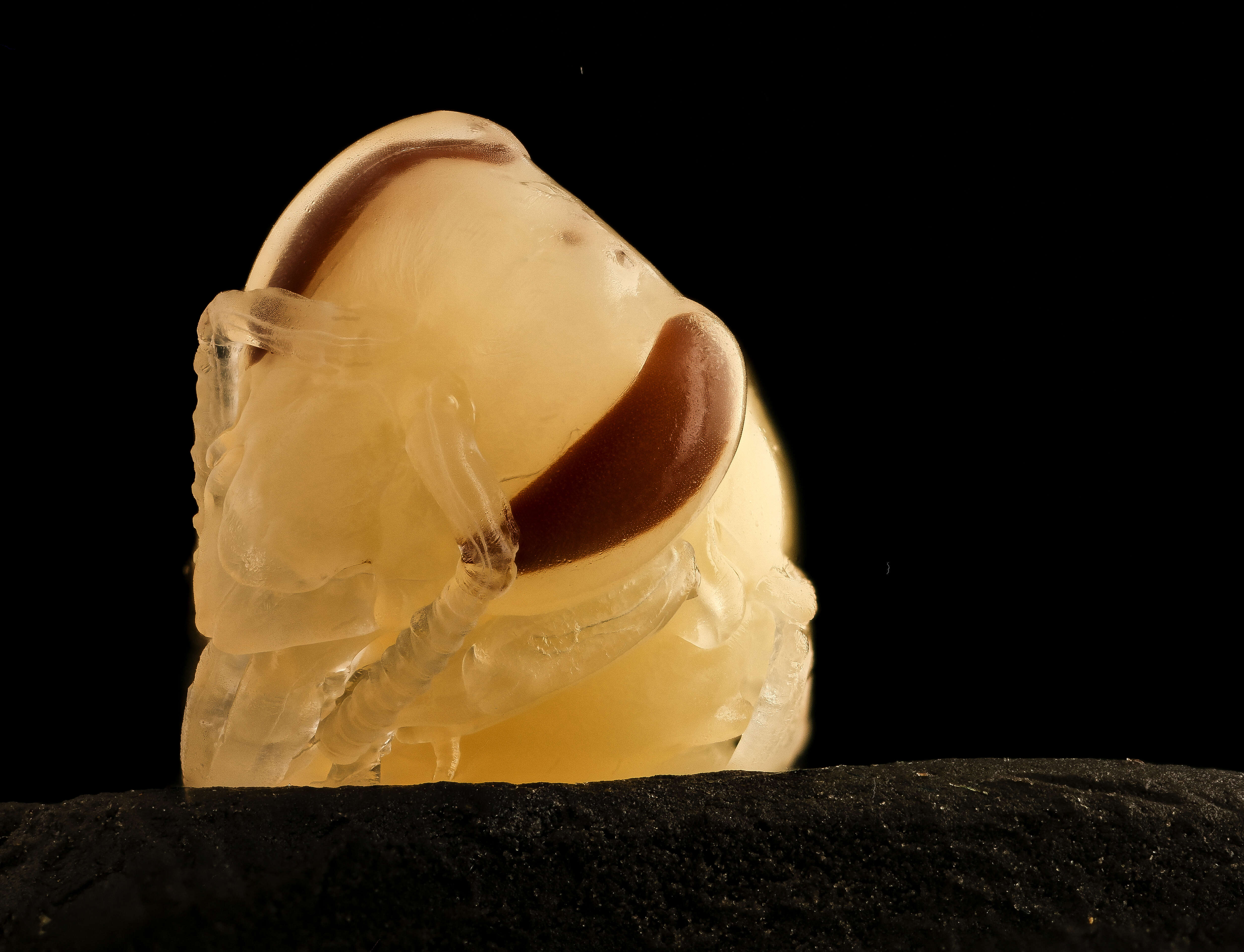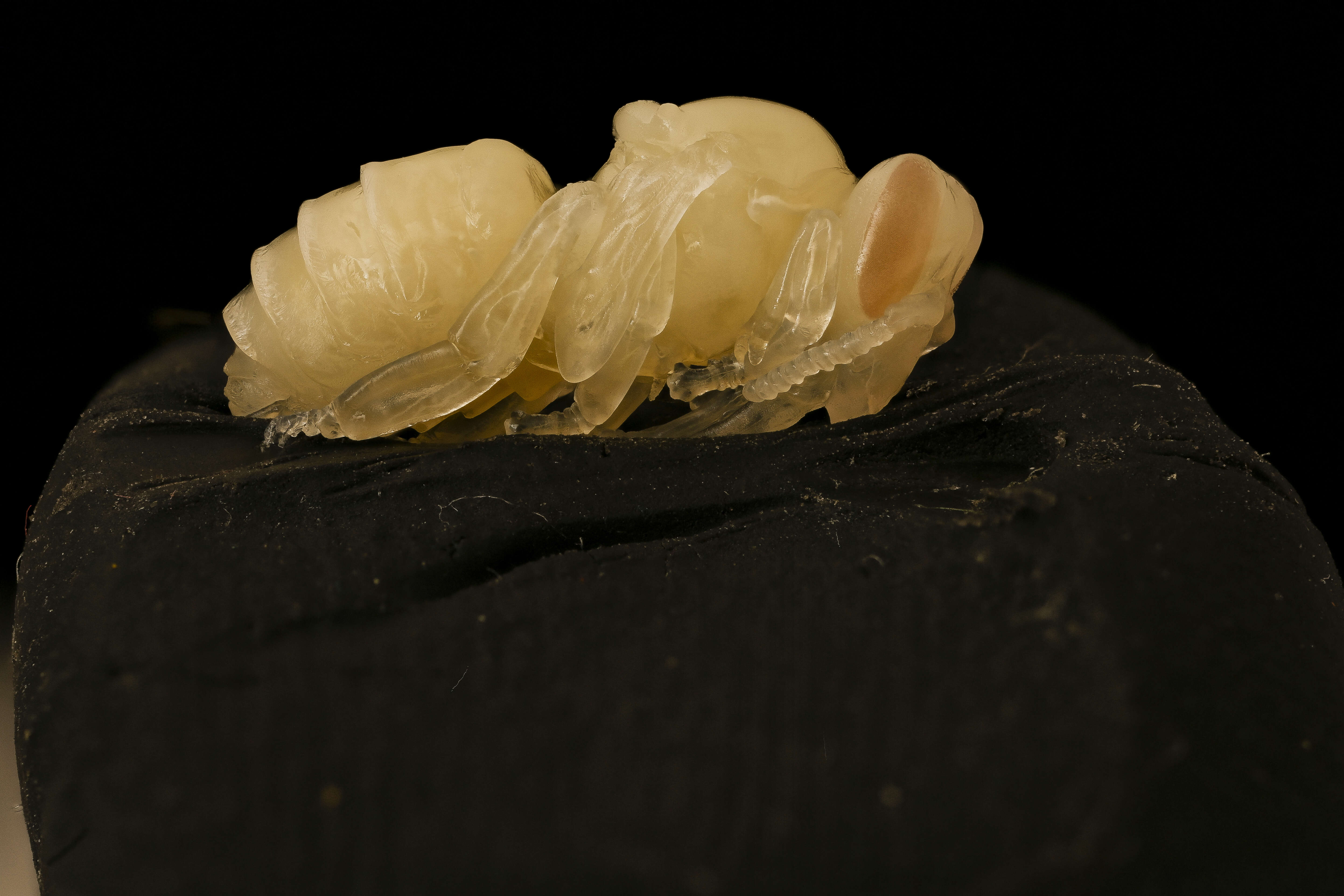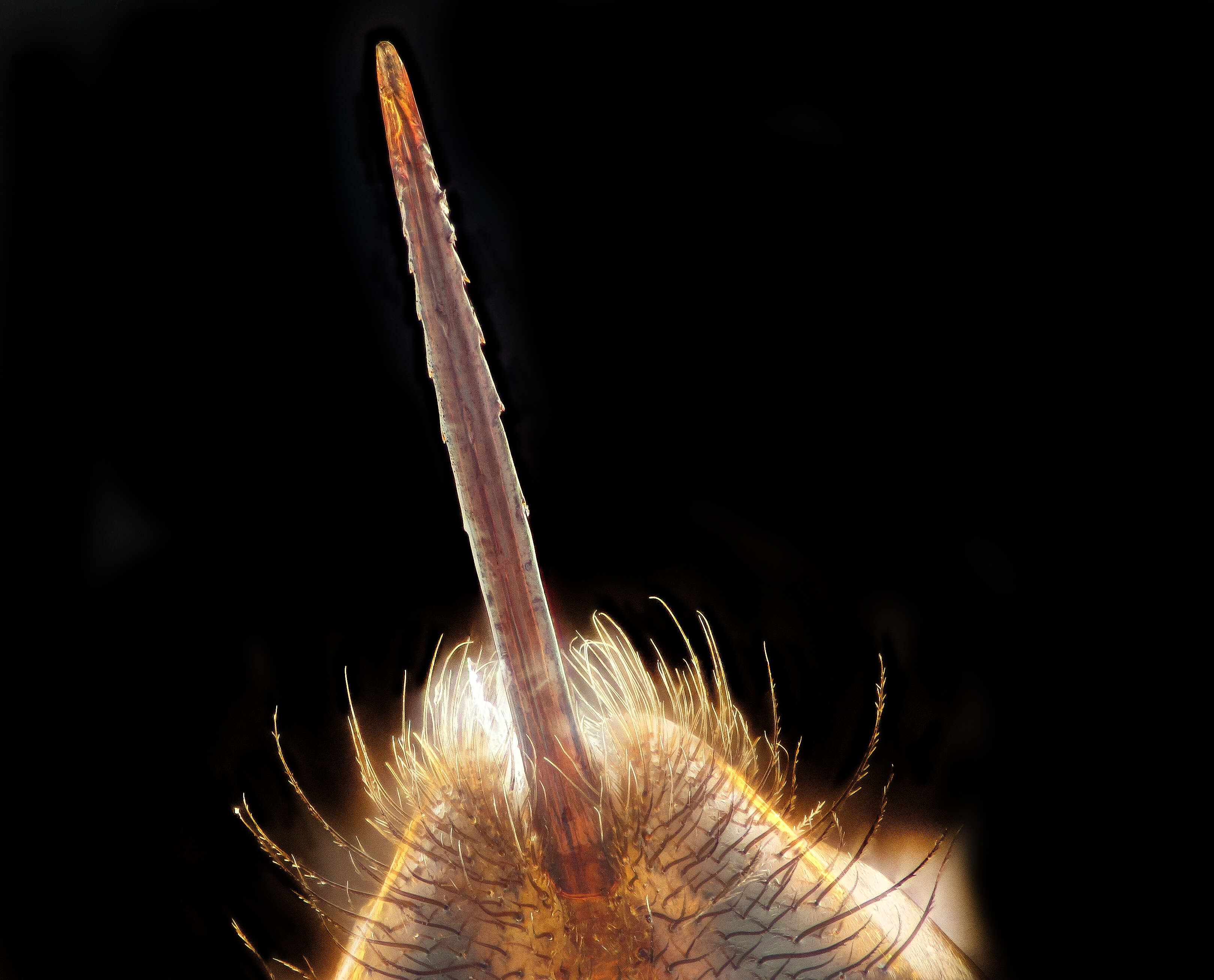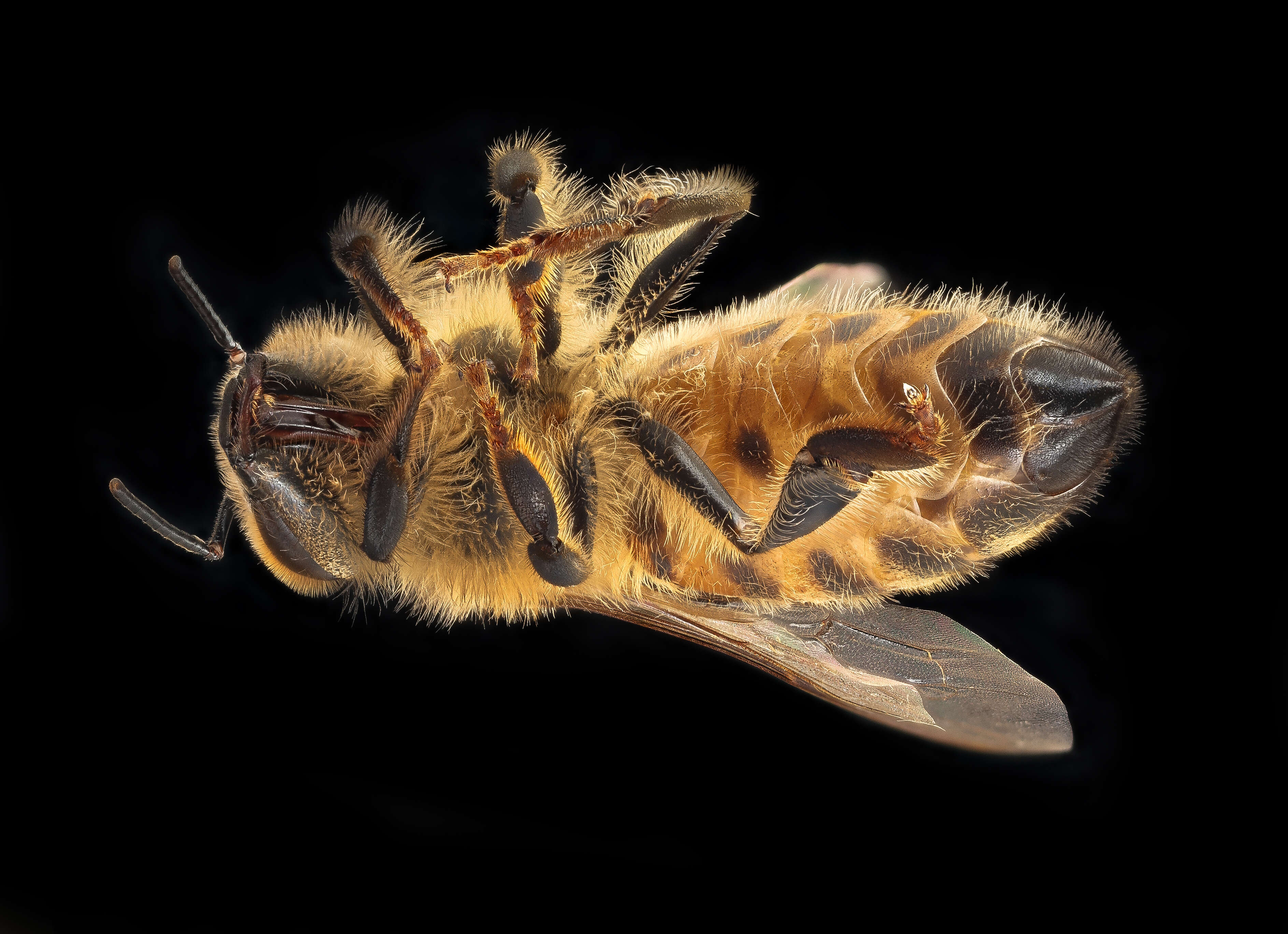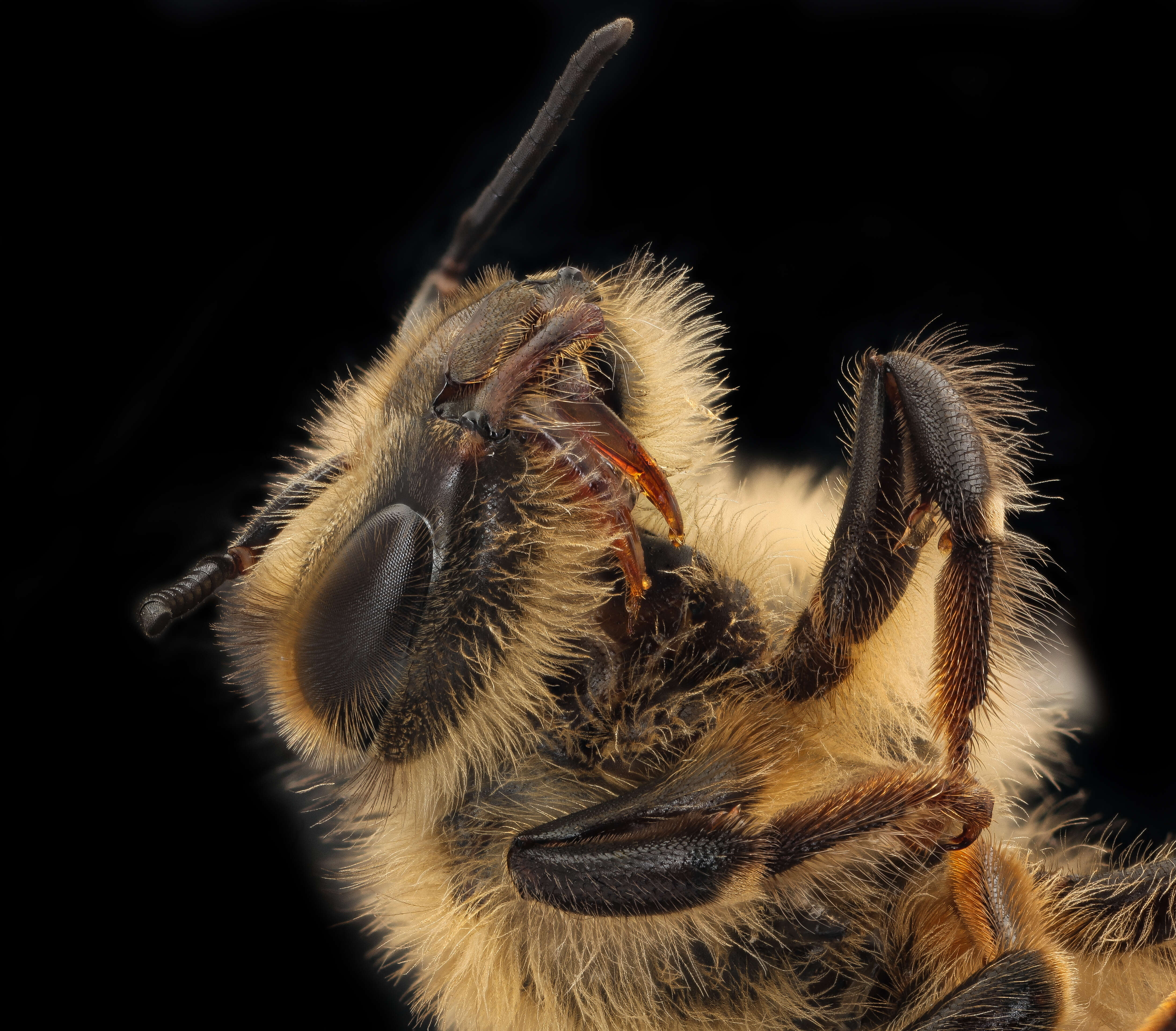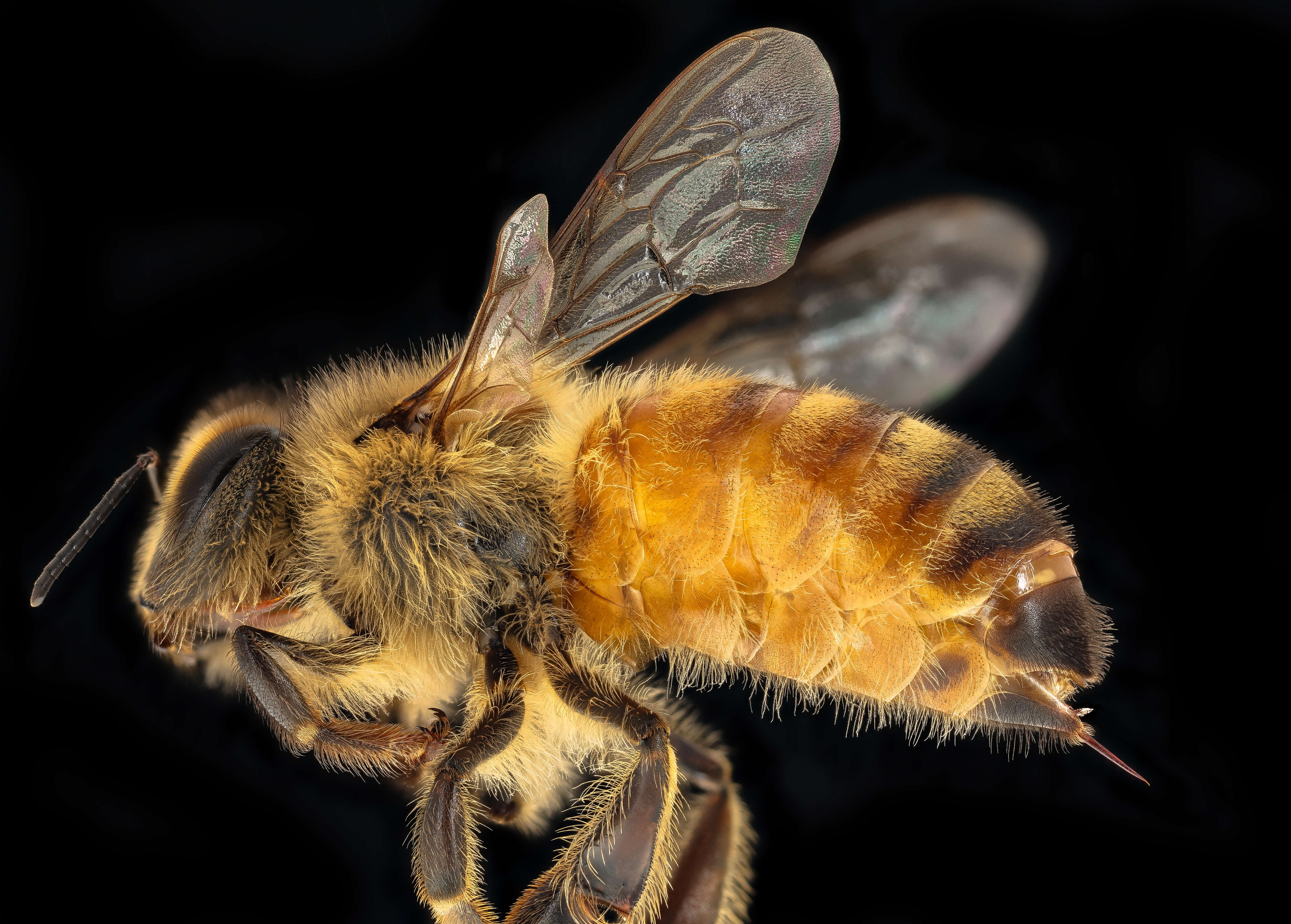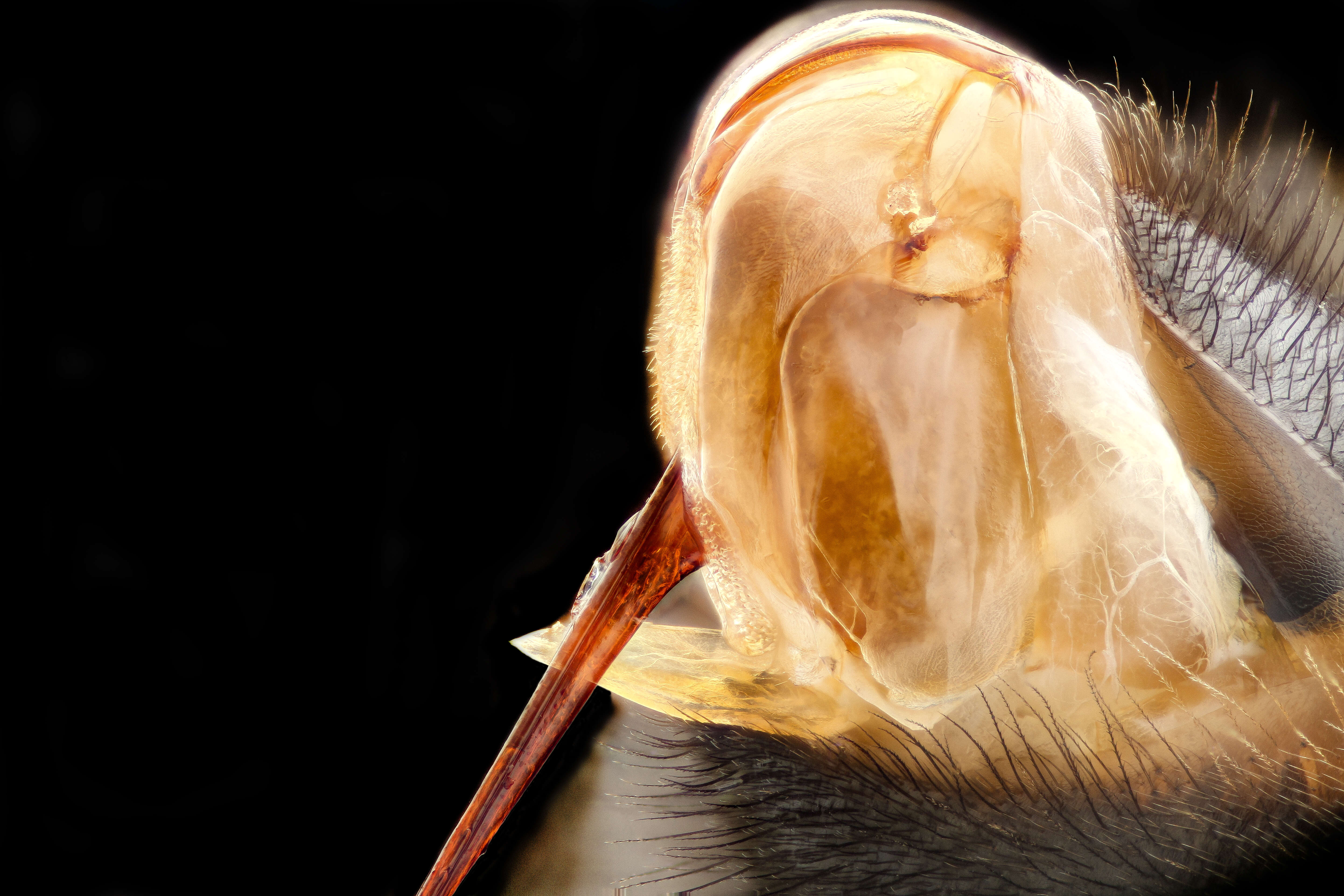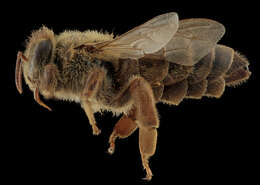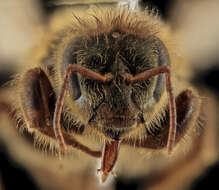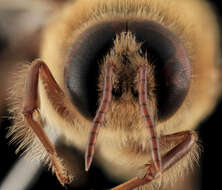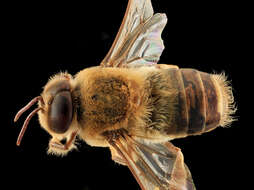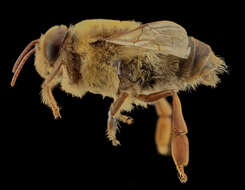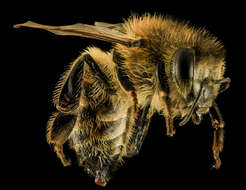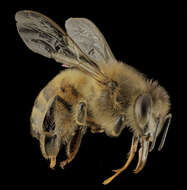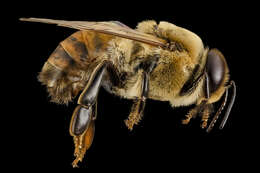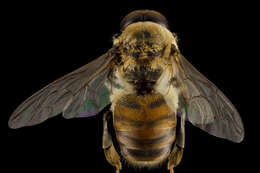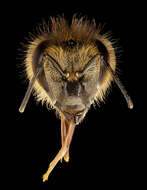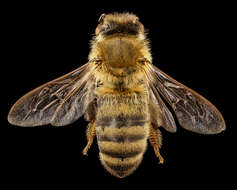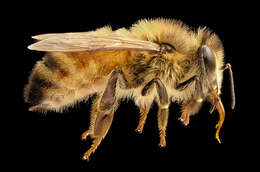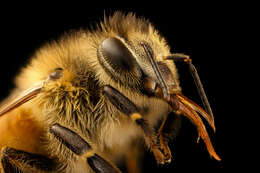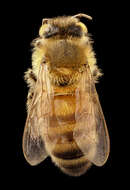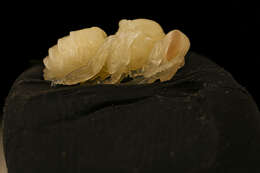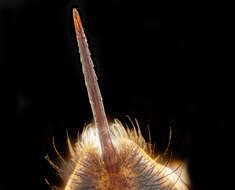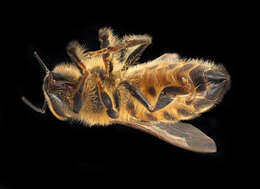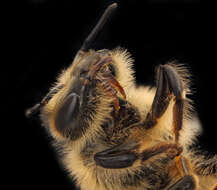The sting of a Honey Bee. Note, I use the word "sting" with some trepidation and fear that I am rising above my station, shunning my roots, or something like that. Because, of course, any untainted American will tell you that bees have "stingers" not "stings." We have Stinger Missiles not Sting Missiles, if you had any doubt. But, just like the difference between eating Venison and "Deer Meat" , these differences call attention to the murky line between people who have been cultured up by too much education and those who aren't under the influence of the precepts of the upper classes. I wonder if British kids call them stings or stingers? (And really, why do Americans use the term "Deer Meat" (real Americans I mean)? No other animal flesh as the term "meat" applied after it.) Now that I have finished exposing one of my multi-decadal chronic irritations (I am firmly of the "Deer Meat" clan) we can move on and point out that this stinger (whoops) is barbed and that is why it stays in our skin. However, most other bees do not have barbed stingers but smooth ones. However, I believe that Laurence Packer (a stingologist and originally from Britain) once told me that other species also have barbed stings. Perhaps @packerlab will report out. This bee came from Phil Frank who brought a series of honey bees in to take pictures of for his upcoming book. More to deep thoughts to come. ~~~~~~~~~~{{{{{{0}}}}}}~~~~~~~~~~
All photographs are public domain, feel free to download and use as you wish.
Photography Information:
Canon Mark II 5D, Zerene Stacker, Stackshot Sled, 65mm Canon MP-E 1-5X macro lens, Twin Macro Flash in Styrofoam Cooler, F5.0, ISO 100, Shutter Speed 200
We Are Made One with What We Touch and See
We are resolved into the supreme air,
We are made one with what we touch and see,
With our heart's blood each crimson sun is fair,
With our young lives each spring impassioned tree
Flames into green, the wildest beasts that range
The moor our kinsmen are, all life is one, and all is change.
- Oscar Wilde
You can also follow us on Instagram - account = USGSBIML
Want some Useful Links to the Techniques We Use? Well now here you go Citizen:
Best over all technical resource for photo stacking:
www.extreme-macro.co.uk/
Art Photo Book: Bees: An Up-Close Look at Pollinators Around the World:
www.amazon.com/Bees-Up-Close-Pollinators-Around-World/dp/...
Free Field Guide to Bee Genera of Maryland:
bio2.elmira.edu/fieldbio/beesofmarylandbookversion1.pdf
Basic USGSBIML set up:
www.youtube.com/watch?v=S-_yvIsucOY
USGSBIML Photoshopping Technique: Note that we now have added using the burn tool at 50% opacity set to shadows to clean up the halos that bleed into the black background from "hot" color sections of the picture.
www.youtube.com/watch?v=Bdmx_8zqvN4
Bees of Maryland Organized by Taxa with information on each Genus
www.flickr.com/photos/usgsbiml/collections
PDF of Basic USGSBIML Photography Set Up:
Google Hangout Demonstration of Techniques:
plus.google.com/events/c5569losvskrv2nu606ltof8odo
or
www.youtube.com/watch?v=4c15neFttoU
Excellent Technical Form on Stacking:
www.photomacrography.net/
Contact information:
Sam Droege
sdroege@usgs.gov
301 497 5840


